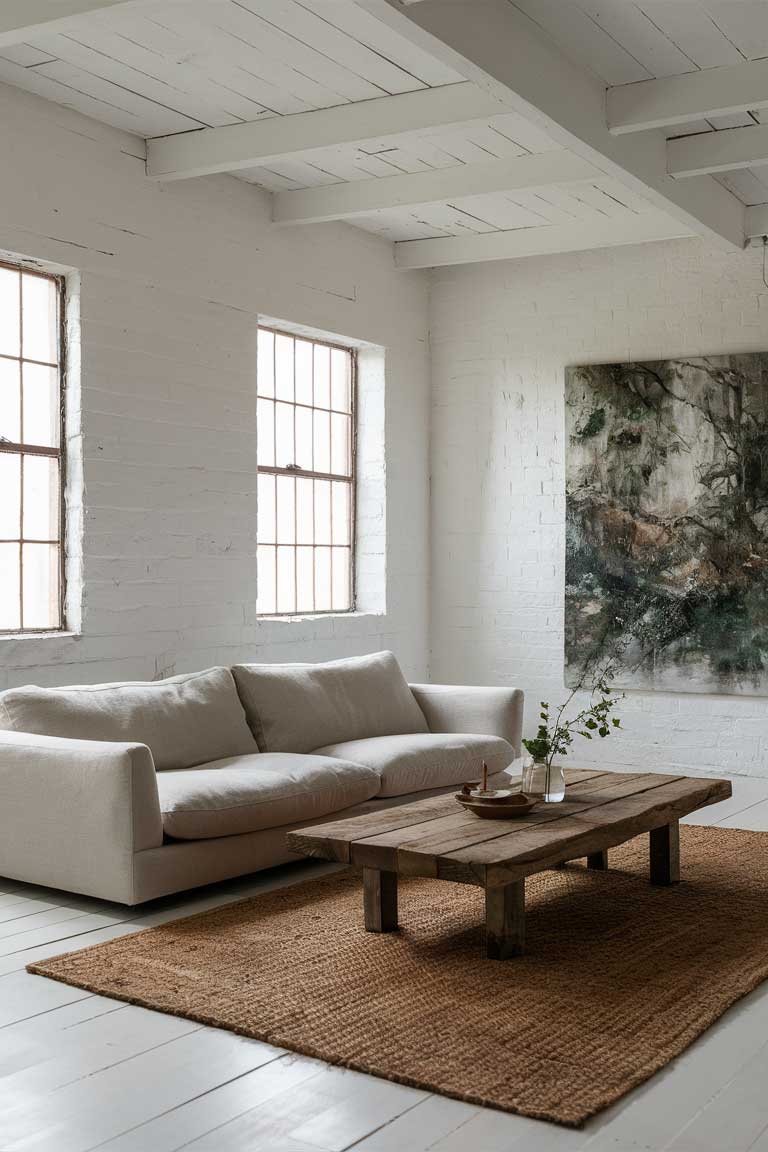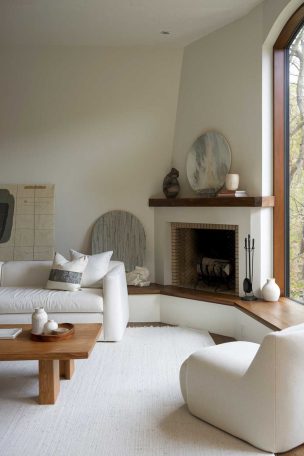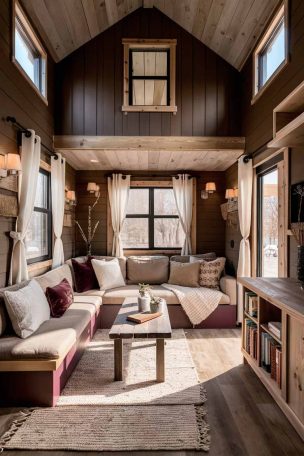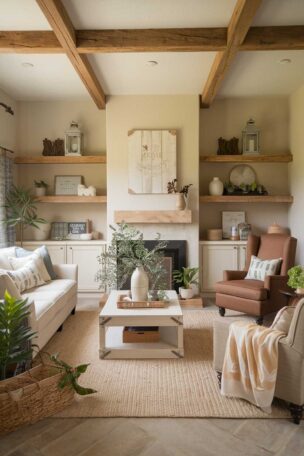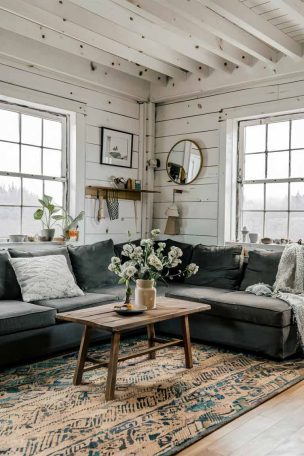Rustic minimalism is a design style that combines the cozy charm of rustic decor with the clean lines and simplicity of minimalism.
It’s a perfect blend for those who love the warmth of natural elements but crave the serenity of uncluttered spaces.
Let’s dive into how you can create this harmonious balance in your living room.
Color Palette: The Foundation of Rustic Minimalism
The color palette is crucial in setting the tone for your rustic minimalist living room.
It’s all about creating a calm, inviting atmosphere that feels both grounded and airy.
Neutral Base
Start with a foundation of neutral tones.
Whites, beiges, and earthy hues form the perfect backdrop for rustic minimalism.
These colors create a sense of spaciousness and allow your carefully chosen decor elements to shine.
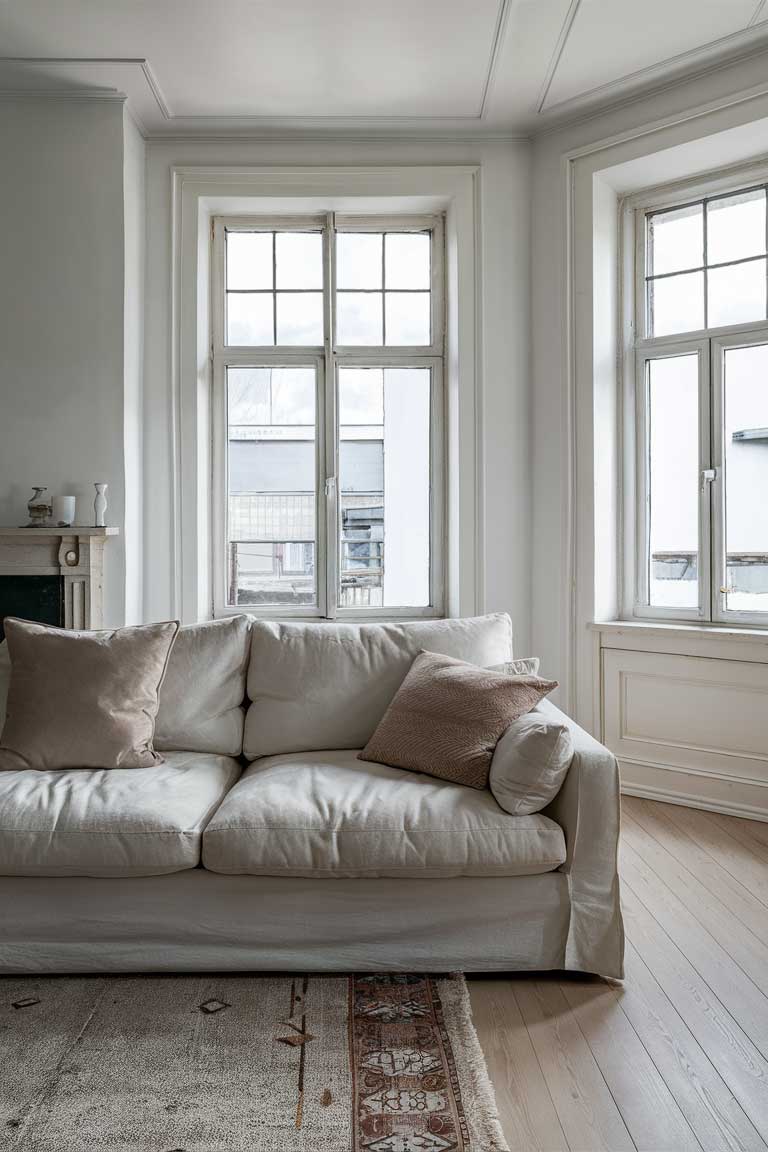
Think of your walls as a canvas.
A warm white or soft beige can make the room feel open and bright.
These neutral tones also complement the natural materials often used in rustic decor, like wood and stone.
Accent Colors
To add depth and interest to your space, introduce muted, nature-inspired accent colors.
Think sage green, dusty blue, or even a soft terracotta.
These colors bring life to the room without overwhelming the minimalist aesthetic.
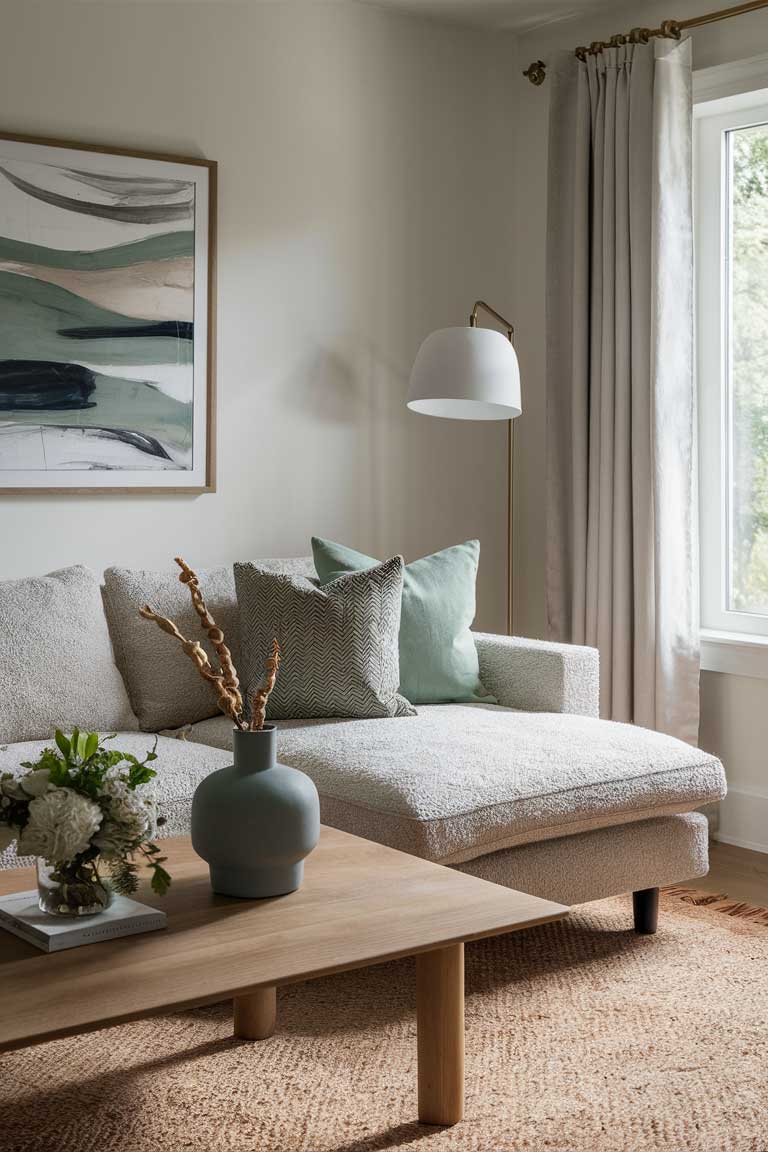
Use these accent colors sparingly.
A few throw pillows, a cozy blanket, or a piece of art can add just the right amount of color without cluttering your space.
Remember, in rustic minimalism, less is often more.
Furniture Selection: Form Meets Function
Choosing the right furniture is key to achieving the rustic minimalist look.
Each piece should serve a purpose and contribute to the overall aesthetic.
Natural Materials
Opt for furniture made from natural materials.
Reclaimed wood pieces are perfect for adding rustic charm while maintaining a minimalist silhouette.
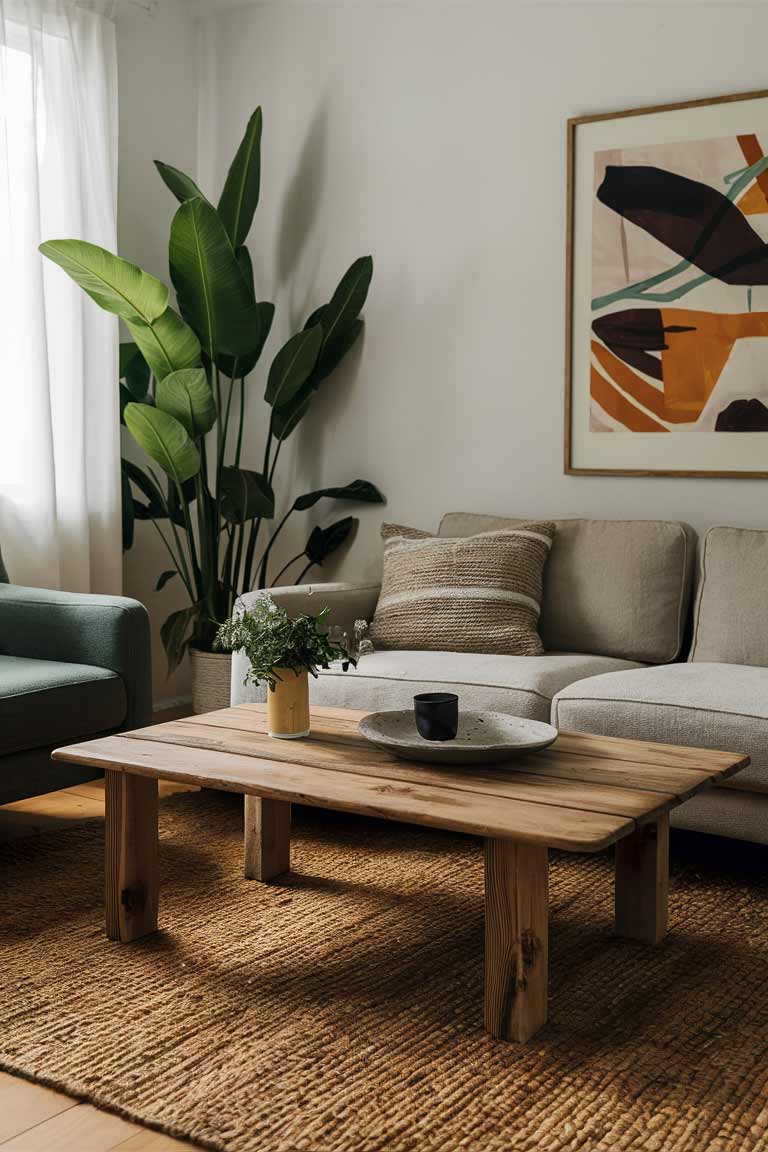
Don’t be afraid to mix materials.
A stone or concrete side table can complement wooden pieces beautifully.
The key is to keep the overall look cohesive by sticking to a limited palette of natural materials.
Multifunctional Pieces
In true minimalist fashion, choose furniture that serves multiple purposes.
A modular sofa in light linen not only provides comfortable seating but can also be rearranged to suit different needs.
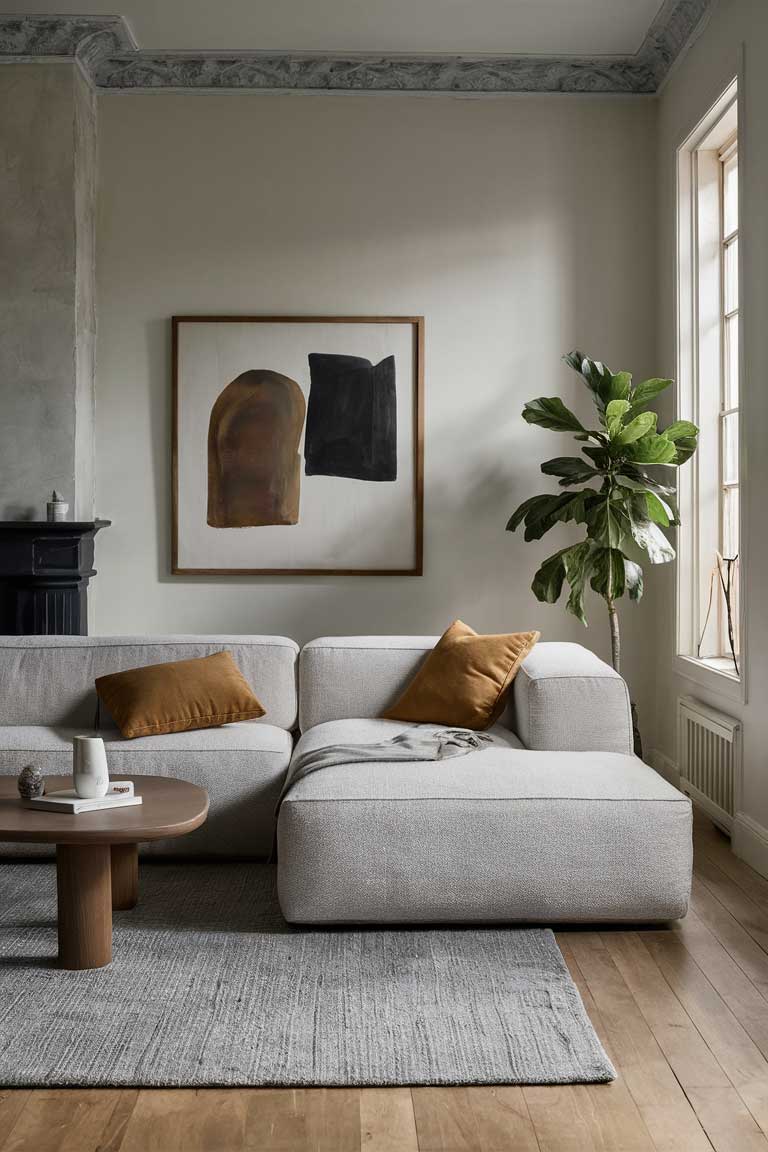
Look for coffee tables with built-in storage or ottomans that can double as extra seating.
This approach helps maintain a clutter-free space while ensuring everything you need is at hand.
Texture Mix
While keeping the color palette subdued, play with textures to add visual interest.
A jute rug paired with a sleek leather armchair creates a beautiful contrast that’s rustic and modern.
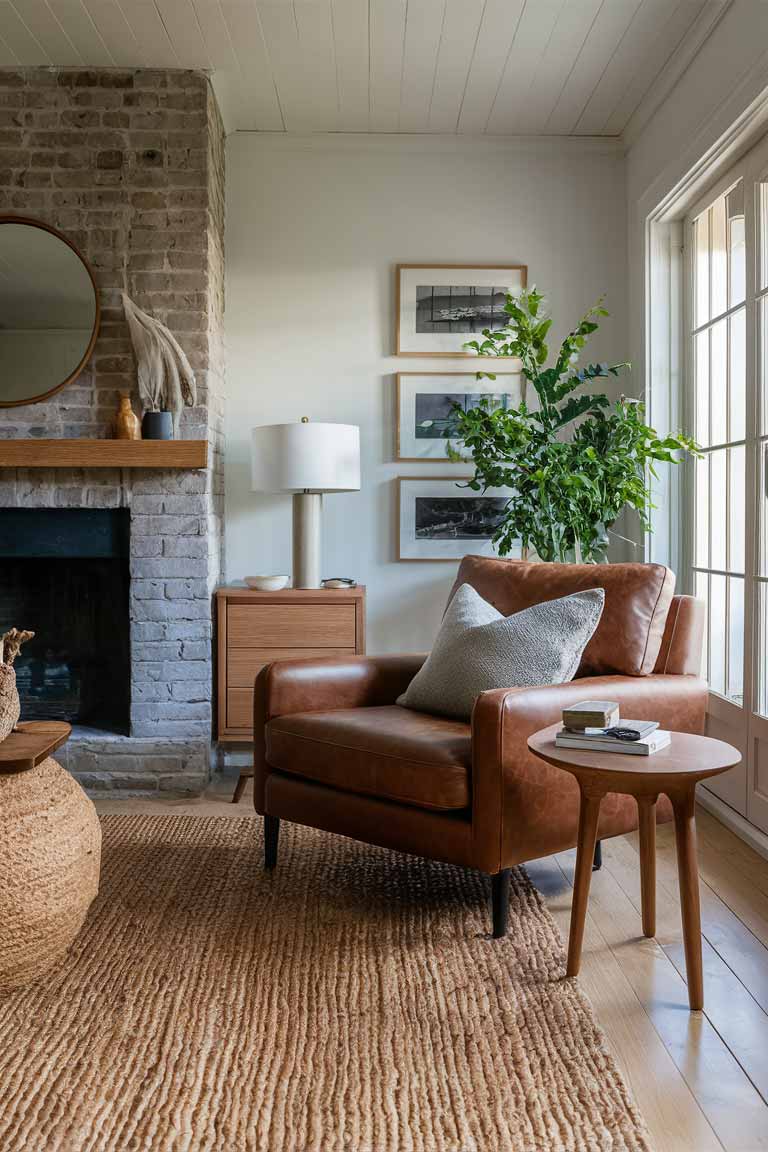
The interplay of different textures adds depth to your space without relying on bold colors or patterns.
It’s a subtle way to make your living room feel more dynamic and inviting.
Decor Elements: Subtle Rustic Touches
Decorative elements are where you can let the rustic side of your design shine, but remember to keep it minimal.
Bringing the Outdoors In
Incorporate natural elements to strengthen the connection with the outdoors.
Potted plants not only purify the air but also add life to your space.
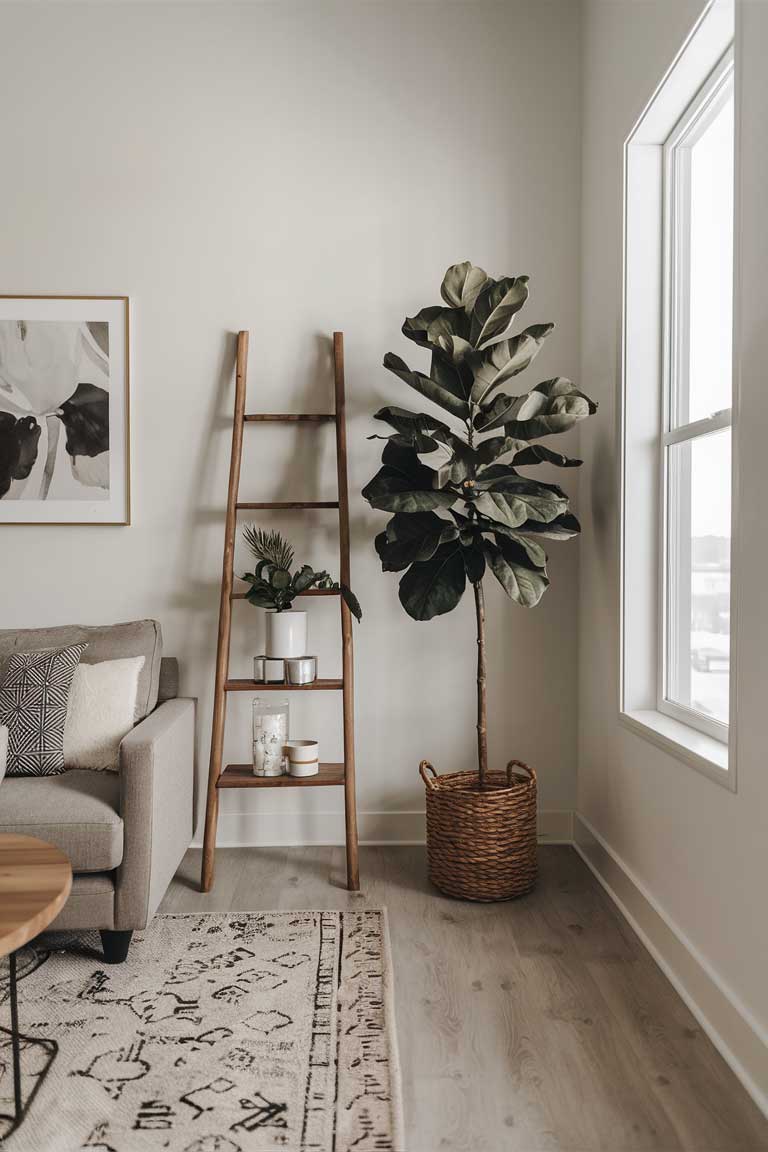
Choose plants that suit the minimalist aesthetic, like a fiddle leaf fig or a snake plant.
Their structural shapes complement the clean lines of your furniture while adding a touch of nature.
Wall Art
When it comes to wall decor, less is definitely more.
A single large piece of nature-inspired art can serve as a stunning focal point.
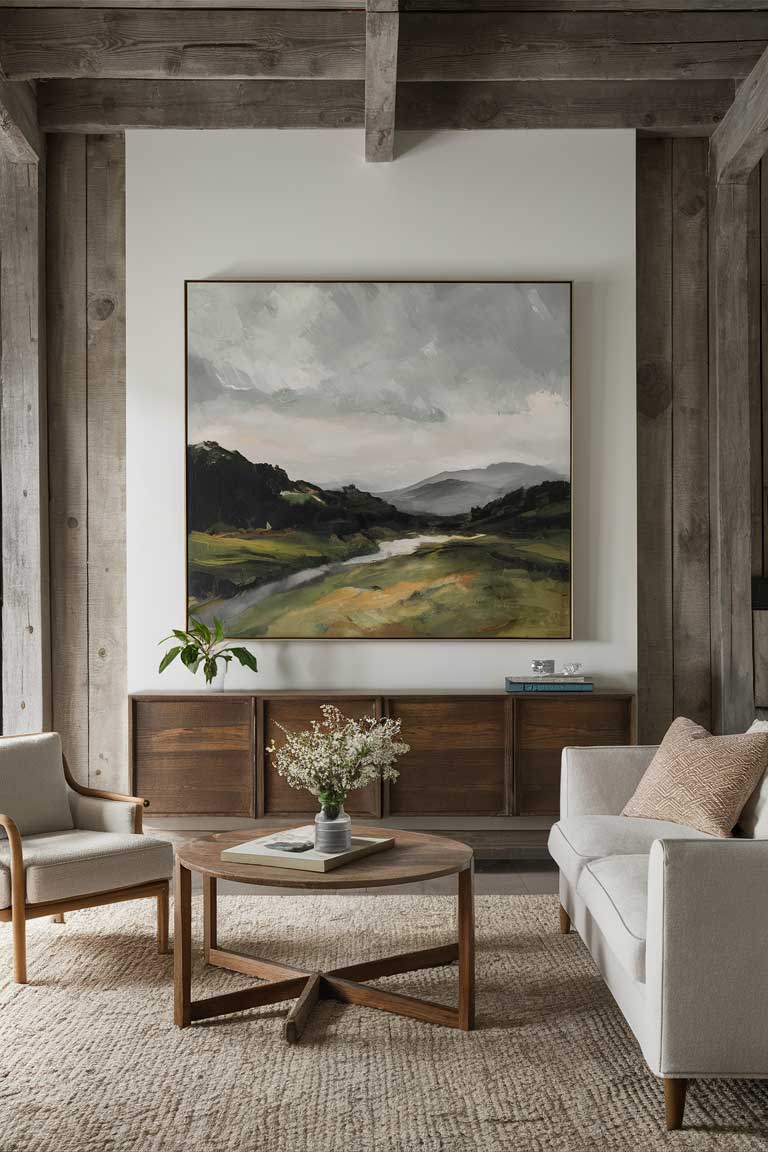
Alternatively, create a small gallery wall with framed photographs of rustic scenes.
Keep the frames simple and cohesive to maintain the minimalist vibe.
Lighting Fixtures
Lighting is crucial in setting the mood of your rustic minimalist living room.
Opt for fixtures that blend natural materials with simple designs.
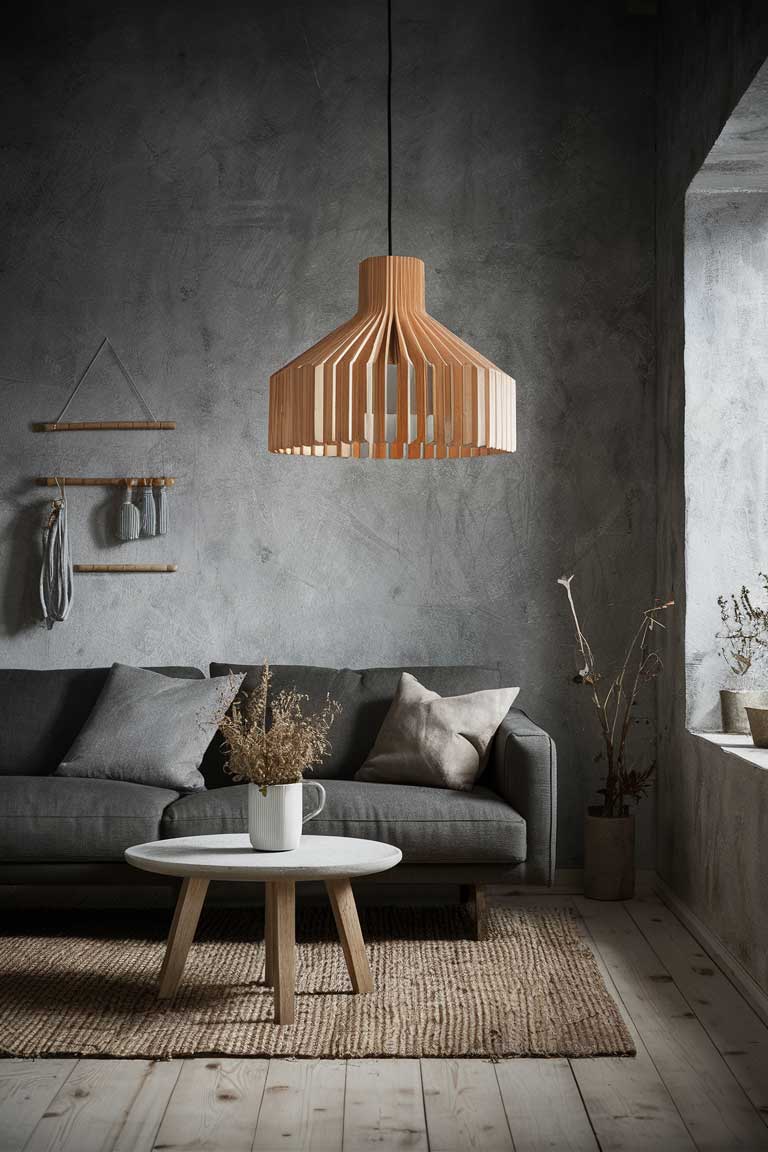
A wooden pendant light or a sleek floor lamp with rustic elements can add functionality and style to your space.
Space Planning: Openness and Coziness
The way you arrange your furniture can greatly impact the feel of your rustic minimalist living room.
Open Layout
Aim for an open, airy feel by carefully considering your furniture placement.
Create clear pathways and avoid overcrowding the space.
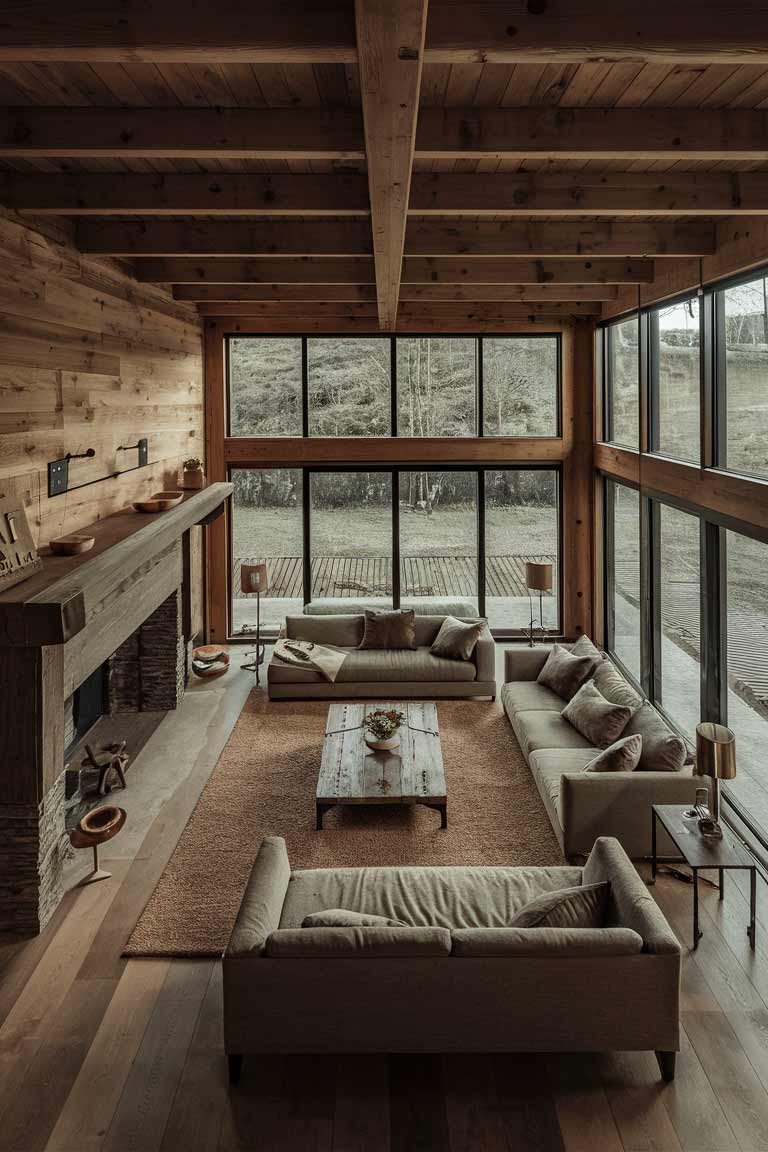
Define different areas within the room, like a conversation zone centered around the fireplace or a reading nook by the window.
This helps maintain a sense of purpose for each part of the room without using physical dividers.
Cozy Nooks
Even in an open layout, it’s important to create cozy spots that invite relaxation.
A reading corner with a comfortable chair and a simple side table can be the perfect retreat.
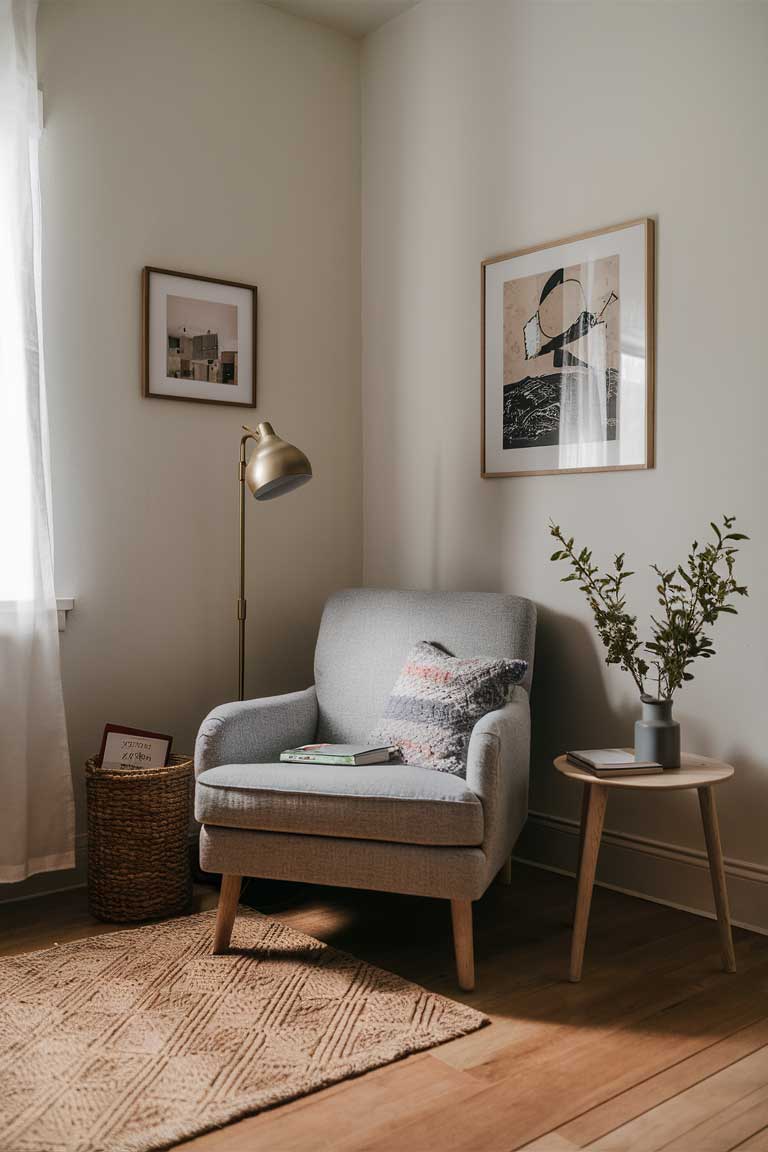
These intimate spaces add warmth to your minimalist design, making the room feel lived-in and welcoming.
Textiles: Soft Touches of Comfort
Textiles are an excellent way to add comfort and texture to your rustic minimalist living room without compromising style.
Natural Fabrics
Stick to natural fabrics like linen, wool, and cotton.
These materials not only feel great but also age beautifully, adding to the rustic charm over time.
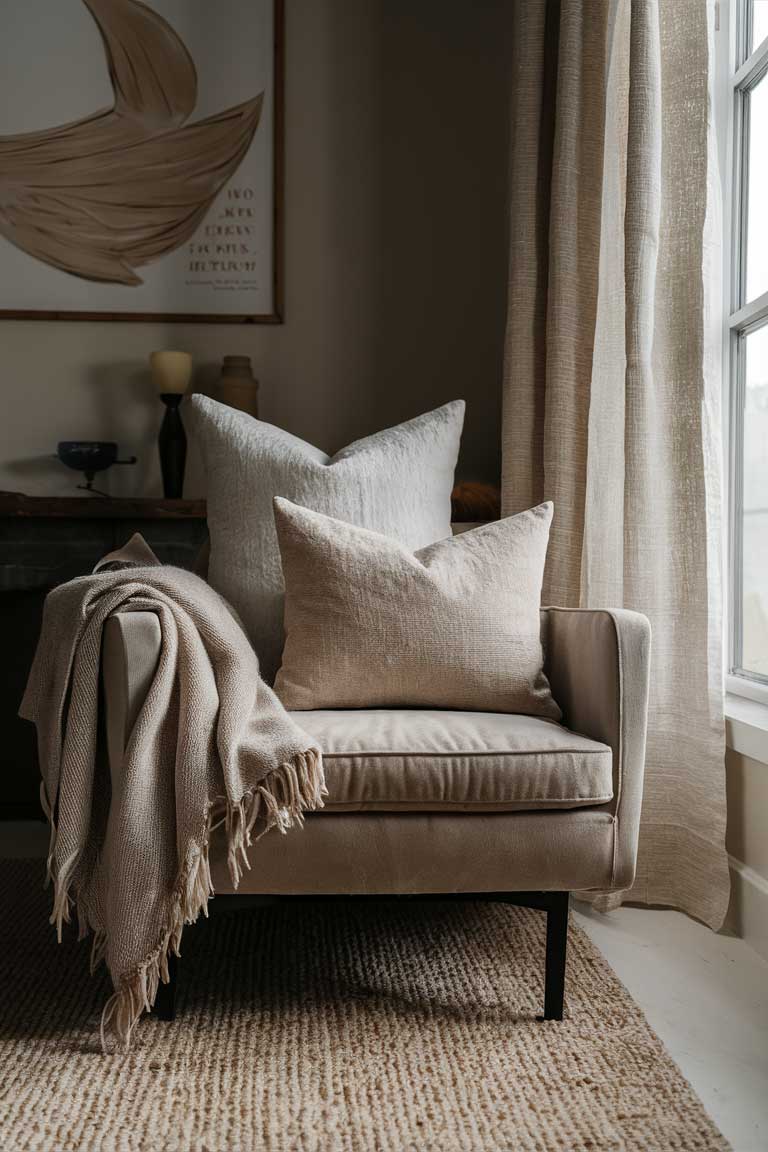
Choose solid colors or subtle patterns that complement your rustic theme.
A herringbone throw or a pillow with a delicate stripe can add interest without overwhelming the space.
Layering Techniques
Layering is key to creating depth and comfort in your minimalist space.
Start with a large, neutral jute rug as a base, then add a smaller, more textured rug on top.
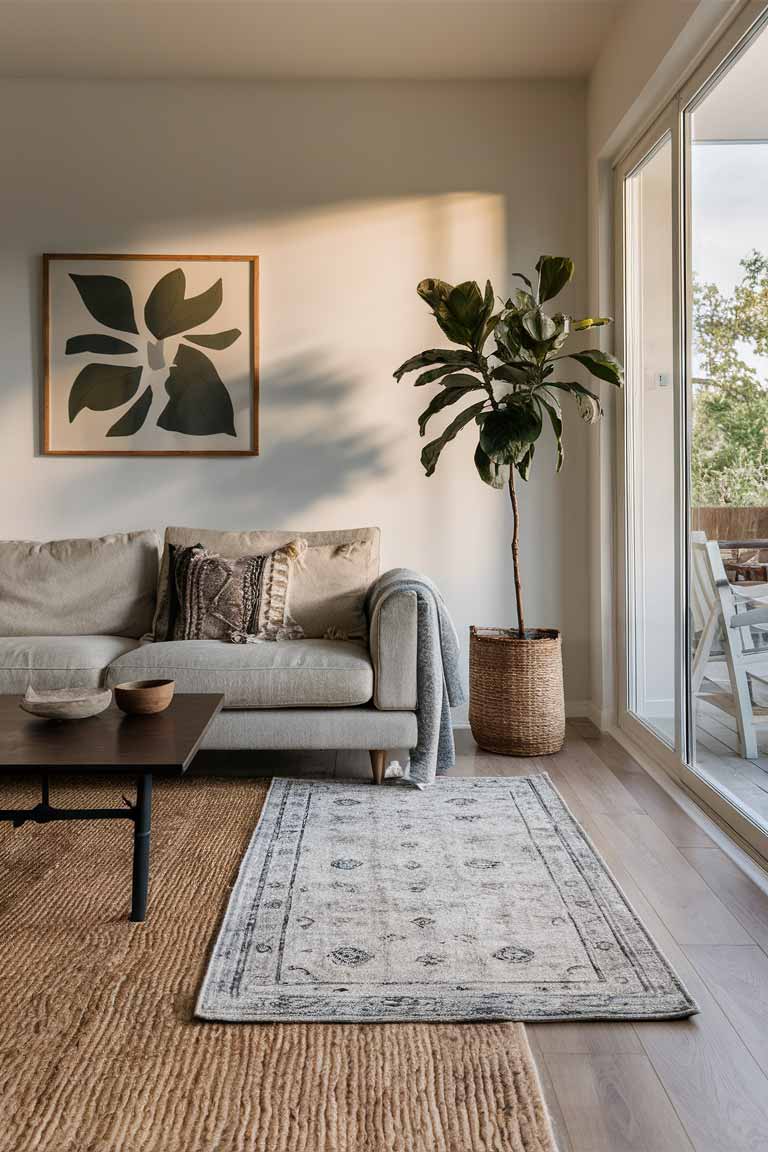
This technique not only adds visual interest but also creates a more comfortable underfoot experience, perfect for those chilly mornings.
Creative Incorporation of Rustic Elements
Finding creative ways to incorporate rustic elements can elevate your minimalist design to new heights.
Statement Pieces
Choose one or two statement pieces that embody the rustic aesthetic.
A stone fireplace or a vintage wooden ladder used as decorative storage can become a focal point in your room.
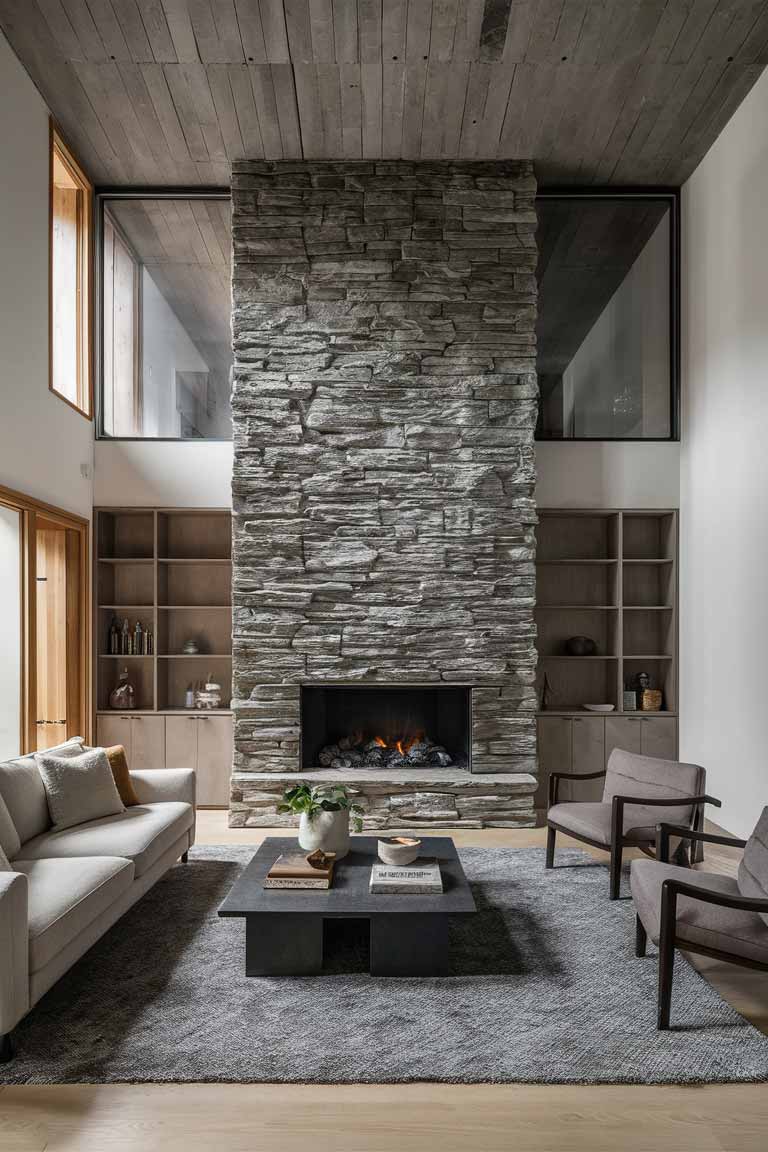
These statement pieces add character and warmth to your space without cluttering it.
They serve as conversation starters and give your room a unique personality.
Mixed Furniture Styles
Don’t be afraid to mix furniture styles.
A modern sofa can look stunning paired with vintage wooden chairs.
This eclectic approach adds depth to your design and prevents it from feeling too stark or impersonal.
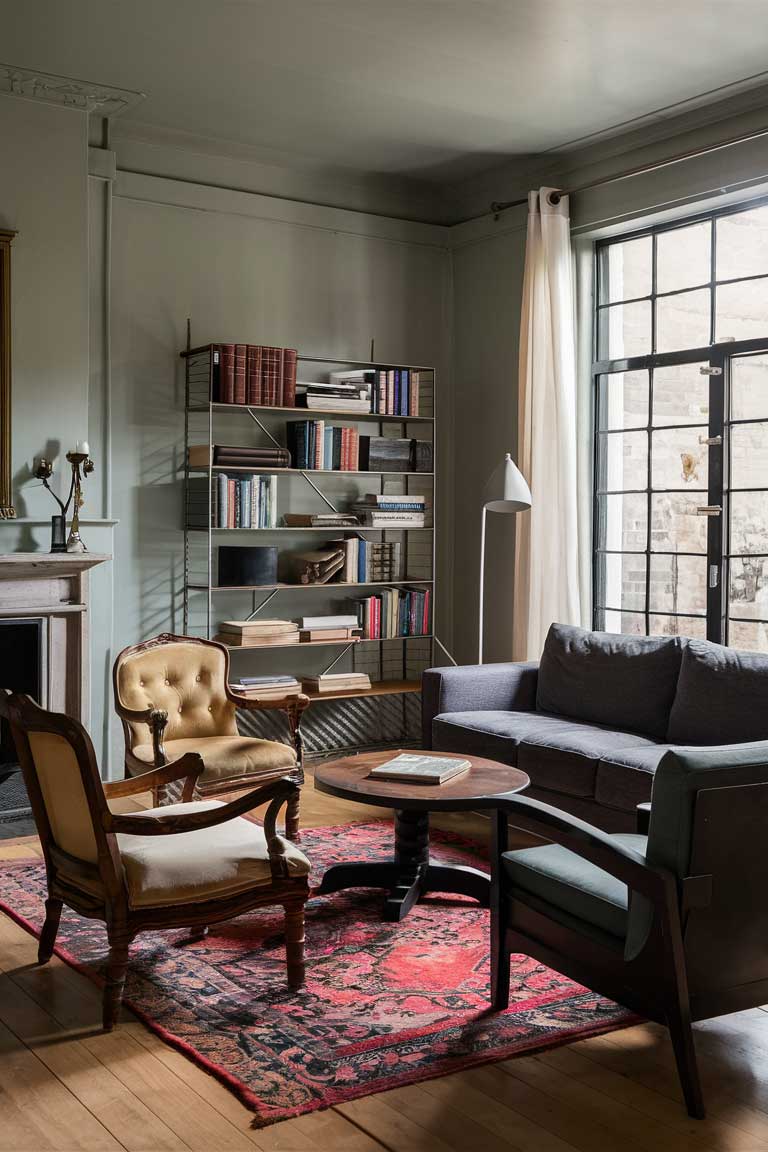
The key is to maintain a cohesive color palette and to ensure that each piece, regardless of its style, has clean lines that align with the minimalist aspect of your design.
Natural Accents
Small natural accents can make a big impact.
A wooden bowl filled with pinecones or river rocks, or a piece of driftwood displayed as wall art, can add the perfect touch of nature to your space.

These elements bring texture and visual interest to your room while reinforcing the connection to nature that’s so crucial in rustic design.
Lighting: Setting the Mood
Lighting plays a crucial role in creating the right atmosphere in your rustic minimalist living room.
Fixtures
Choose lighting fixtures that blend rustic elements with a minimalist design.
A wrought iron chandelier with clean lines or a wooden floor lamp with a simple linen shade can perfectly encapsulate this style.
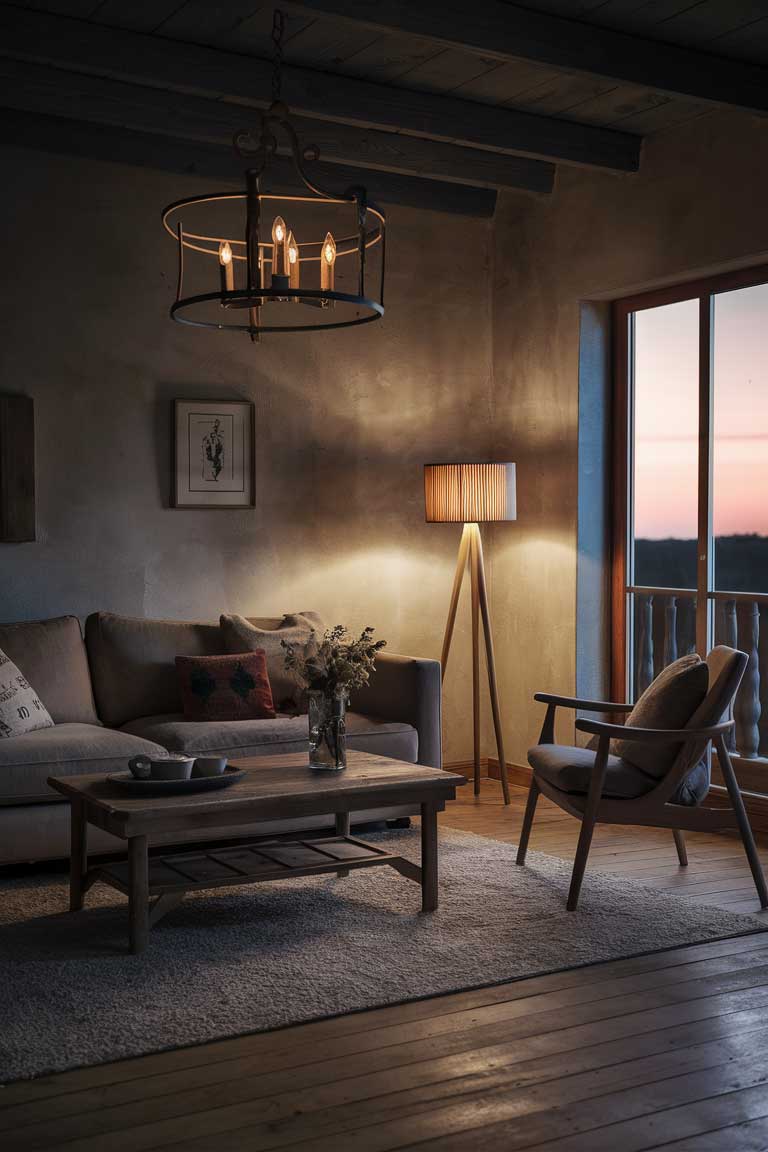
Remember, the fixtures themselves should be as much a part of your decor as they are functional elements of your room.
Ambiance
The quality of light is just as important as the fixtures themselves.
Opt for warm-toned LED bulbs to create a cozy, inviting atmosphere.
Installing dimmer switches allows you to adjust the lighting to suit different moods and times of day.
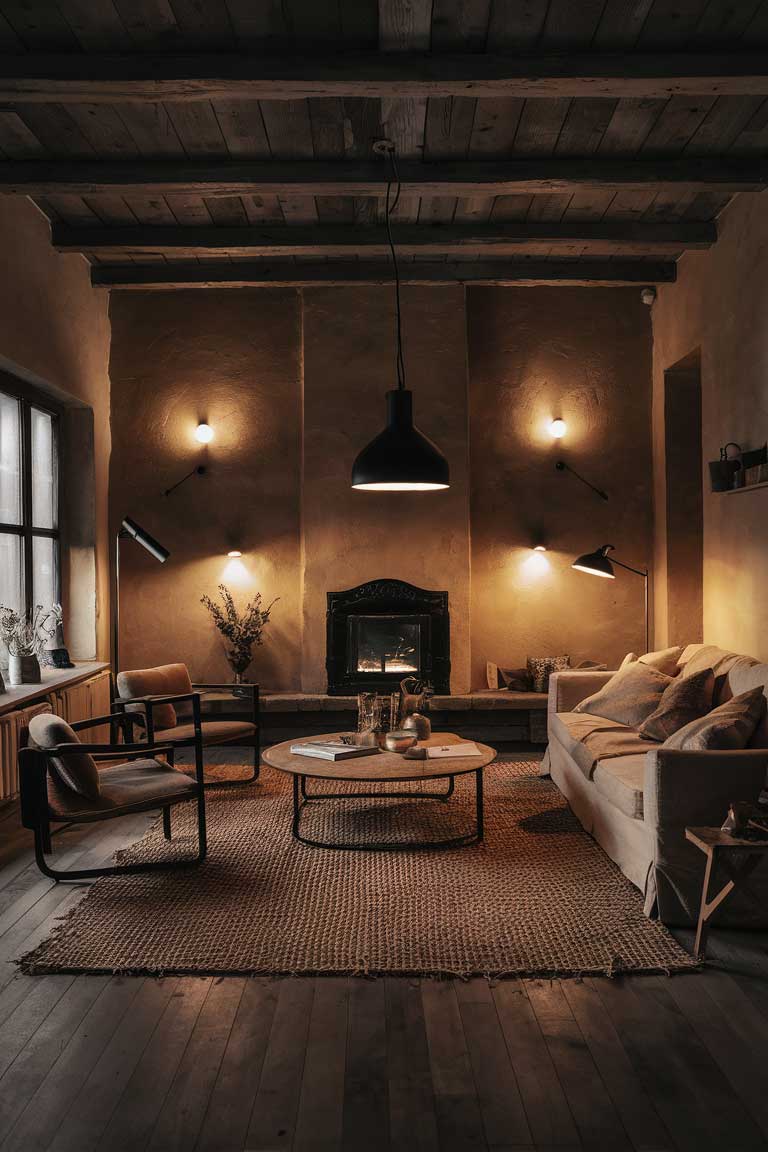
The right lighting can enhance the natural textures in your room, casting beautiful shadows and creating a sense of depth and warmth.
Conclusion
Creating a rustic minimalist living room is all about finding the perfect balance between cozy charm and uncluttered simplicity.
By carefully selecting your color palette, furniture, decor elements, and lighting, you can create a space that feels both serene and welcoming.
Remember, the key is to let each element shine.
Choose pieces that speak to you and that serve a purpose, whether functional or aesthetic.
Don’t be afraid to mix styles and textures, but always keep the overall look clean and intentional.
With these ideas in mind, you’re well on your way to creating a rustic minimalist living room that’s not only beautiful but also a true reflection of your style.
It’s a space where you can relax, entertain, and truly feel at home.

